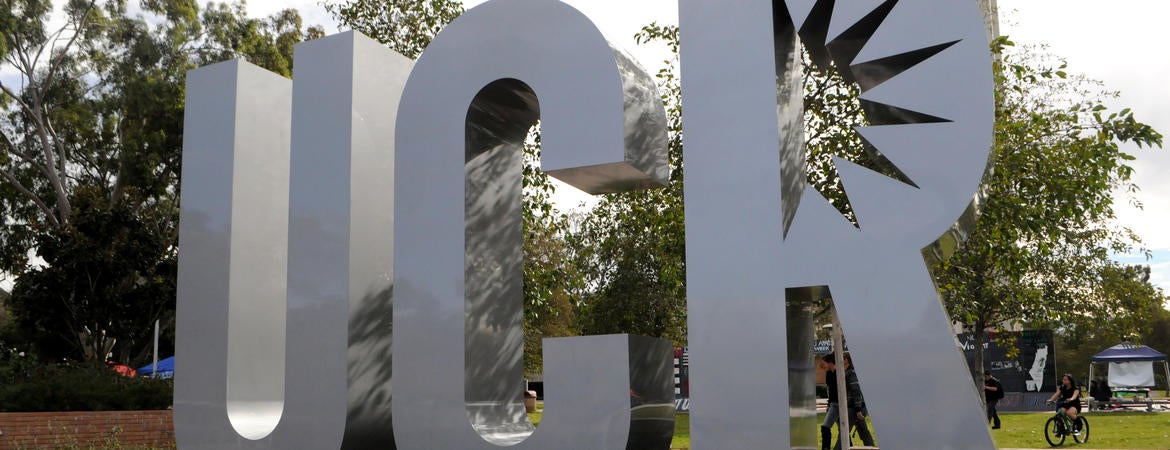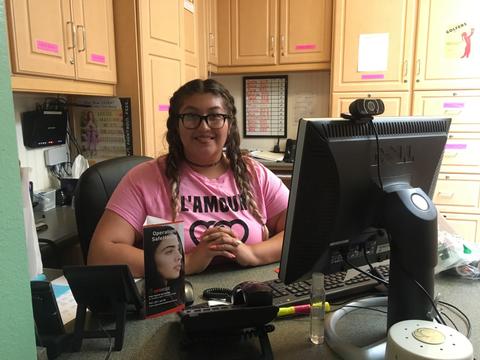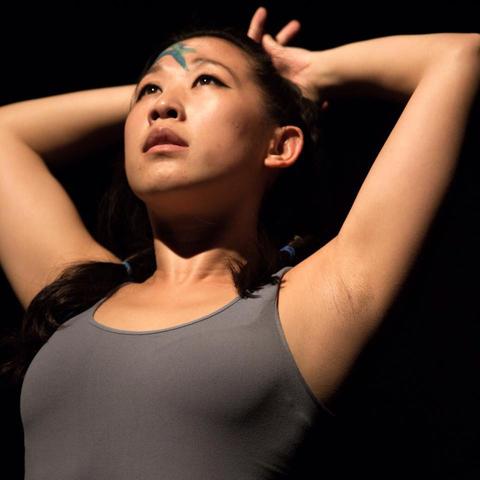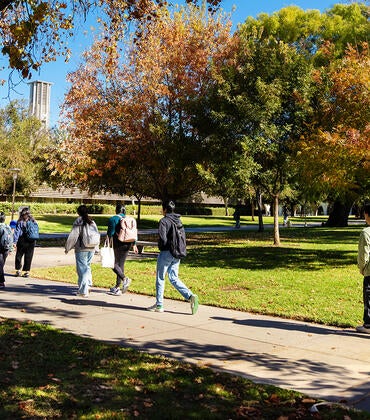
Summer break does not translate into idle hours for these three UC Riverside students.
For Bela Mendoza, a three-month summer internship with Riverside’s Operation SafeHouse, a youth emergency shelter, has given her an inside look at how to make a bigger — and more positive — impact in the lives of teens facing issues such as foster care, depression, homelessness, and human trafficking. At one point, she too experienced foster care and homelessness.
Magnolia Yang Sao Yia is digging deep into her ancestral roots. As a doctoral student in critical dance studies, she’s spending this summer in Minnesota dancing with Ananya Dance Theatre, a contemporary Indian dance company based in Minneapolis.
Through an internship with City of Hope in Duarte, California, Jonathan Calero is analyzing breast cancer data, specifically, cancerous and normal tissue cell patterns, with the goal of offering better preventative care information for women.
Bela Mendoza
Throughout the summer, Mendoza has gotten a first-hand look at what it takes to offer services to teens in distress at Riverside’s Operation SafeHouse, which offers support, services, and programs for foster youth.
When Mendoza was 16, her world turned upside down. Her primary care provider fell ill and became incapable of looking after her. Mendoza was placed in foster care and in less than two years, she moved schools at least eight times.
Her internship, paid by UCR’s Guardian Scholarsand funded via a 2017 three-year California Wellness Foundation grant awarded to Guardian Scholars, has given her an opportunity to experience foster care from another lens. Her goal after graduating from UCR is to become a social worker.
“I was a former foster youth. I had social workers and had such a bad experience with them. It was hard to get a hold of them,” said Mendoza, a 25-year-old sociology major who will start her senior year this fall. “I never knew any resources existed, and the social worker is supposed to be there to help with that… I want to change that. I want to listen to youth.”
In high school, she never knew college was an option for her, much less the requirements needed to get there, such as the SAT. She started working after graduation, but soon fell into temporary homelessness and eventually figured out that community college could be a way out.
She hopes to use this personal experience as a tool to help other teens.
“I decided to do my internship at Operation SafeHouse because I thought I could help them,” she said. “I can be a mentor, lend an ear to them.”
On a recent weekday, Mendoza's eight-hour shift consisted of attending a meeting, and coordinating art activities that included creating art with clay. She also helped prepare dinner, snacks, and organized household chores among all the teen residents. At night, they played games before sending everyone to bed by 9 p.m.
On another shift, she worked on PowerPoint presentations that focused on college educational requirements, housing, scholarships, and financial aid.
“I felt that was important because some (teens) are lost, some have no hope, and presenting this gives them a little hope in terms of not necessarily needing (cash) in order to attend college,” Mendoza said. “I want them to know that they can go, to think, ‘Oh, I can do it, I can do something.’”
Magnolia Yang Sao Yia
Dance is more than movement for Yang Sao Yia.
She comes from a Hmong family and her parents are among the many Southeast Asian refugees who fled in the mid 1970s as a result of the Vietnam War. The Hmong people are an ethnic group originating from the mountainous areas and live mainly in Southern China, Vietnam, and Laos.
With that historical backdrop, Yang Sao Yia wants to reconnect with some of that lost cultural heritage through her work at UCR, in which she studies Hmong dance.
Yang Sao Yia, 31, is currently spending her summer in Minnesota, where her family resides. Before settling in the Twin Cities, her family lived in Detroit, where she remained without legal immigration status for 10 years. She obtained her legal residency eight years ago. Yang Sao Yia was born in France, the place where her parents sought refuge after fleeing Laos.
Eventually the family moved to the United States. Hmong dancers in the Twin Cities will be part of her doctoral work, she said.
According to Yang Sao Yia’s research, Hmong dance emerged in the U.S. about 40 years ago. It is predominantly performed at annual Hmong New Year celebrations; the dance is a cross-cultural preservation of traditions and yearning for a home, pieced together by an American experience.
“Hmong dance is an identity formation. To practice Hmong dance is to practice culture,” said Yang Sao Yia in a video she produced as an undergraduate at the University of Minnesota.
While Yang Sao Yia builds deeper relationships with the Hmong community in Minnesota, she is also working on a production with Ananya Dance Theatre that will premiere in St. Paul in September.
“Dancing with Ananya Dance Theatre is not necessarily the focus of my doctoral work, but the methodology and social justice philosophy of this dance company inspires me and intersects with my research,” said Yang Sao Yia, who starts her third year in the doctoral program this fall. “My research investigates the dance movements and embodied practices of the Hmong diaspora in the U.S. And as a choreographer, I explore Hmong spirituality, home, and address Hmong patriarchy through my lens and the experience as a Hmong woman.”
Jonathan Calero
Calero considered not attending college. As a first-generation student, he felt his immediate obligation after high school was to find a job and provide economic relief to his family. But a high school counselor managed to change his mind.
Calero, 21, will be starting his fourth year as a biochemistry major this fall. His summer internship is funded by City of Hope and through UCR’s undergraduate research program, Maximizing Access to Research Careers for Undergraduate Student Training in Academic Research, also known as the Marc U Star Program, which is funded by the National Institutes of Health.
Calero, who hopes to pursue a doctoral degree involving research, said this internship has helped him consider options for a future career.
“You are trying to find something that is changing, but you don’t know what it is,” Calero said. “It’s like piecing a puzzle together. I’ve never studied breast cancer, so studying this is very interesting.”
The internship with City of Hope is Calero’s third summer internship; past summer work included research with the United States Department of Agriculture in Maryland, and at UCR with the SALSA Summer Research Experience program, which allows students to work with other undergrads and senior researchers on an agribusiness project.
The internships have broadened his perspectives about the world, and allowed him to make new friends and build professional networks, Calero said.
At UCR, he is involved in several organizations, including serving as the current president of the Dynamic Genome Outreach Group. The group brings in K-12 students throughout the year to work with its members on projects. UCR students also teach them about research, and most importantly, mentor them.
Calero wants to make sure young students have an opportunity to learn about science and become exposed to a diverse group of people as early as possible. For him, UCR’s diversity made him appreciate the world a little more.
“Working at City of Hope is an invaluable experience and people are very nice,” he said. “But there is one thing I am sure of for the future: I want to always give back.”





